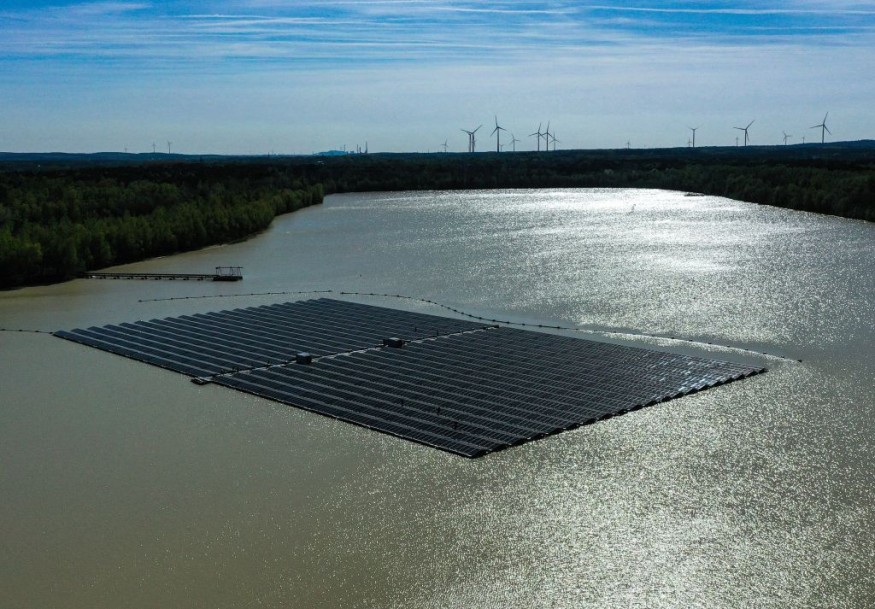With its newest ambition to create the world's largest solar plant in the Philippines, Prime Infrastructure Holdings, backed by billionaire Enrique Razon, Jr., is extending its investments in renewable energy.

An Ambitious Plan
The privately-owned business, which revealed last week that it would acquire a majority interest in the Malampaya gas field in the West Philippine Sea, said Wednesday that its subsidiary Terra Solar Philippines would construct a solar farm with a capacity of 2,500 to 3,500 megawatts. While the corporation does not provide financial information, industry insiders estimate that the project will cost around $3 billion to complete.
The plant, which will include a giant battery capable of storing up to 4,500-megawatt-hours of power, would surpass the capacity of the Bhadla Solar Park, the world's largest working solar farm, which generates 2,250 megawatts over a 5,700-hectare area in northern India.
In an email to Forbes Asia, Prime Infra said it would use its collaboration with Solar Philippines, created by businessman Leandro Leviste, a Forbes 30 Under 30 alumni, to find possible project locations in northern and southern Luzon. The solar Philippines, which is already constructing a solar farm in Nueva Ecija, approximately 100 kilometers north of Manila, is collaborating with Prime Infra on another solar farm in Tarlac, about 70 kilometers west of Nueva Ecija.
"Prime Infra finds a sweet spot to pursue solar as we take advantage of the steep decline in installation costs over the last decade and improved battery energy storage system technology that allows us to build an economically critical and socially relevant infrastructure at a scale the world has never seen before," said Guillaume Lucci, president, and CEO of Prime Infra.
Power Agreements

Last year, Terra Solar agreed to supply the Manila Electric Co. (Meralco), the country's largest privately-held utility, with around 850 megawatts of electricity to power Metro Manila and adjacent regions. It will begin delivering 600 megawatts to Meralco in 2026, with another 250 megawatts coming online the following year. Meralco is a joint venture between tycoon Manuel Pangilinan's Metro Pacific and billionaire Lance Gokongwei's JG Summit.
In addition to solar energy, Razon has recently invested in hydropower plants and water utilities through Prime Infra. Trident Water, a subsidiary of his infrastructure-focused Prime Strategic Holdings, acquired Manila Water from Ayala Corp. in June 2021. Razon also owns International Container Terminal Services Inc., a worldwide port giant, and Bloomberry Resorts, which operates the Solaire Resort and Casino in Manila. According to Forbes' real-time statistics, Razon has a net worth of $6.1 billion.
Renewable Energy in the Philippines

Renewable energy generated 26.44 percent of total power in the Philippines in 2013, accounting for 19,903 gigawatt-hours (GWh) out of a total demand of 75,266 GWh. In terms of fossil fuels, the Philippines is a net importer. There is a push to create renewable energy sources for energy security. Among the options are hydropower, geothermal power, wind power, solar power, and biomass power. The Philippine government has enacted several programs to increase the country's renewable energy usage.
Hydropower, geothermal and solar energy, wind power, and biomass resources are all used in the Philippines. In 2013, these sources produced 19,903 GWh of electrical energy, accounting for 26.44 percent of the country's electricity consumption. Geothermal energy is the cheapest and most (economically) appealing of the renewable energy sources accessible in the country, followed by wind, hydropower, and solar PV.
Related Article : Experts are Saying that Renewable Sources are Not Enough to Solve Europe's Energy Crisis
For more environmental news, don't forget to follow Nature World News!
© 2025 NatureWorldNews.com All rights reserved. Do not reproduce without permission.





